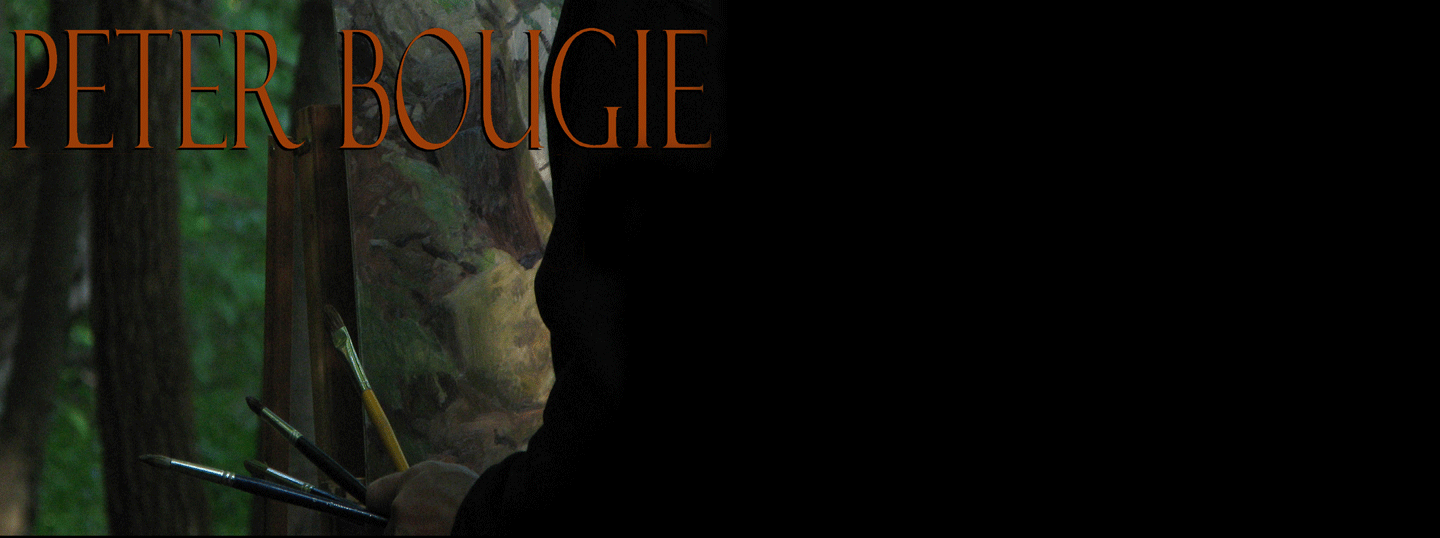 |
| Head of St. Peter St. Peter Chapel, Cathedral of St. Paul St. Paul, MN |
One mid-morning
after sitting like this I rose and as I walked away from the chapel it dawned
on me that I hadn’t heard any voices or footsteps for some time. I walked out
into the main part of the sanctuary and it looked like I was all alone in the
cathedral. There was no one in sight and no sound of any movement. Even quiet
movements rustle and echo in that vast interior. I detected nothing stirring beyond
the bronze grilles set in a half circle behind the high altar. The bronze crucifix
and the golden tabernacle rested under the baldachin. At the four corners where
the transept intersects the nave, and where the four main piers uphold the
dome, stand the twice as large as life statues of the four evangelists. It was
a peculiar sensation to have this ornate richness to myself, like having my
room to myself when a boy, daydreaming, fifty-five years ago. But what a room
this was! I was humbled, sized proportionally in spirit as I was physically to
the great building; yet also it seemed the right size, neither too big nor too
small, and theologically correct as well. As He would have died just for me,
had I been the only sinner, so He saw fit to regale me privately for a moment,
in the house made for love of Him, because He delighted to do so. That’s
all.
For all that, the
cathedral is something made for Him, and obviously not Christ Himself. What He delights to
give is passing away with the rest of my life; His intention is that I follow
Him, and not remain where I am.
I have had a
similar sensation at times while painting in front of nature, where He is
present in his creation which, I imagine, if we could see it as He sees it, would
not look anything like it does to us. I paint the observations of three or six or twenty or forty hours. No two moments are the same; distinct
incidents define each one. I observe some of these incidents and make a
resemblance to nature, something others recognize as a likeness of what they see. It
looks like a moment but is really the sum of many moments. He sees a river in
its valley or a forest or an ocean like we might see it if we were able to make
some sort of time lapse photograph spanning eons of time, and even then, our
film would only show the outward appearances of things. It would not show all
the weaver birds weaving nests, worms burrowing or the ten thousand times twenty scurryings in leaf litter occurring in one acre, or sap rising in trees, or
osmosis through cell membranes, or the process of photosynthesis exchanging
oxygen for carbon dioxide a billion billion times, or so I suppose. He sees not
only the contrails when the flight has passed, but the landing, the takeoff,
the serving of refreshments, the manufacture of the airplane, the whole flight
history of the crew, the vanities and conceits of all aboard, the slightest variances in instrument readings from
reality, and the anxiety of the traveler far from home. Even the hairs on our
heads are counted, but generally not by us.
 |
| Blaze, 11 x 14, oil on panel Copyright Peter Bougie 2007 private collection |
 |
| Contrails, 12 x 16, oil on panel Copyright 2012 Peter Bougie private collection |
I paint my
picture, and as I am fond of saying, if it is any good at all it’s as if He answers
me and says “That’s not bad, kid. [I am not a kid to anyone but Him anymore] Now
let’s see if you can hit the curve ball.” So, he throws it low and away and I
reach for it; he throws it high and tight and I corkscrew myself into the
ground.
I also sometimes
pray in the St. Peter chapel, south of the high altar. I usually do penance
there after receiving absolution following confession. How do I know I am
absolved from my sins? How do I know the priest is in persona Christi, as far as the Sacrament is concerned? What did Jesus
mean when he said, “Whose sins you shall forgive, they are forgiven them; and whose
sins you shall retain, they are retained.” ? [John 20:23] Did he give the apostles
the authority to forgive sins, or not? When the apostles laid hands on their
successors, did they transmit the authority transmitted to them, or not?
 |
| St. Peter Chapel Cathedral of St. Paul St. Paul, MN |
I always feel thankful in that chapel, and optimistic at the feet of Peter. He could blunder and bluster and even betray Jesus, yet have contrition, and be called a saint. It was part of our Lord's intention to arrange things that way. When Peter first met Jesus and had heard Him speak, he answered his command: Master, we have fished all night and caught nothing; but if you say so, we will cast out our nets. And Peter thought, these teachers – He gets into my boat and tells me how to fish. Who does he think he is? And then the nets are full to bursting, and Peter makes his first act of contrition: Depart from me Lord, for I am a sinful man. [paraphrasing Luke 5: 1-8]
But He would not
depart from Peter, and He will not depart from us. Look for him on the water,
in the dark, like a ghost, or asleep on a pillow in the stern; or standing
alone before the Sanhedrin, falsely accused, and no one speaks in his behalf.
You, He says,
follow me.























